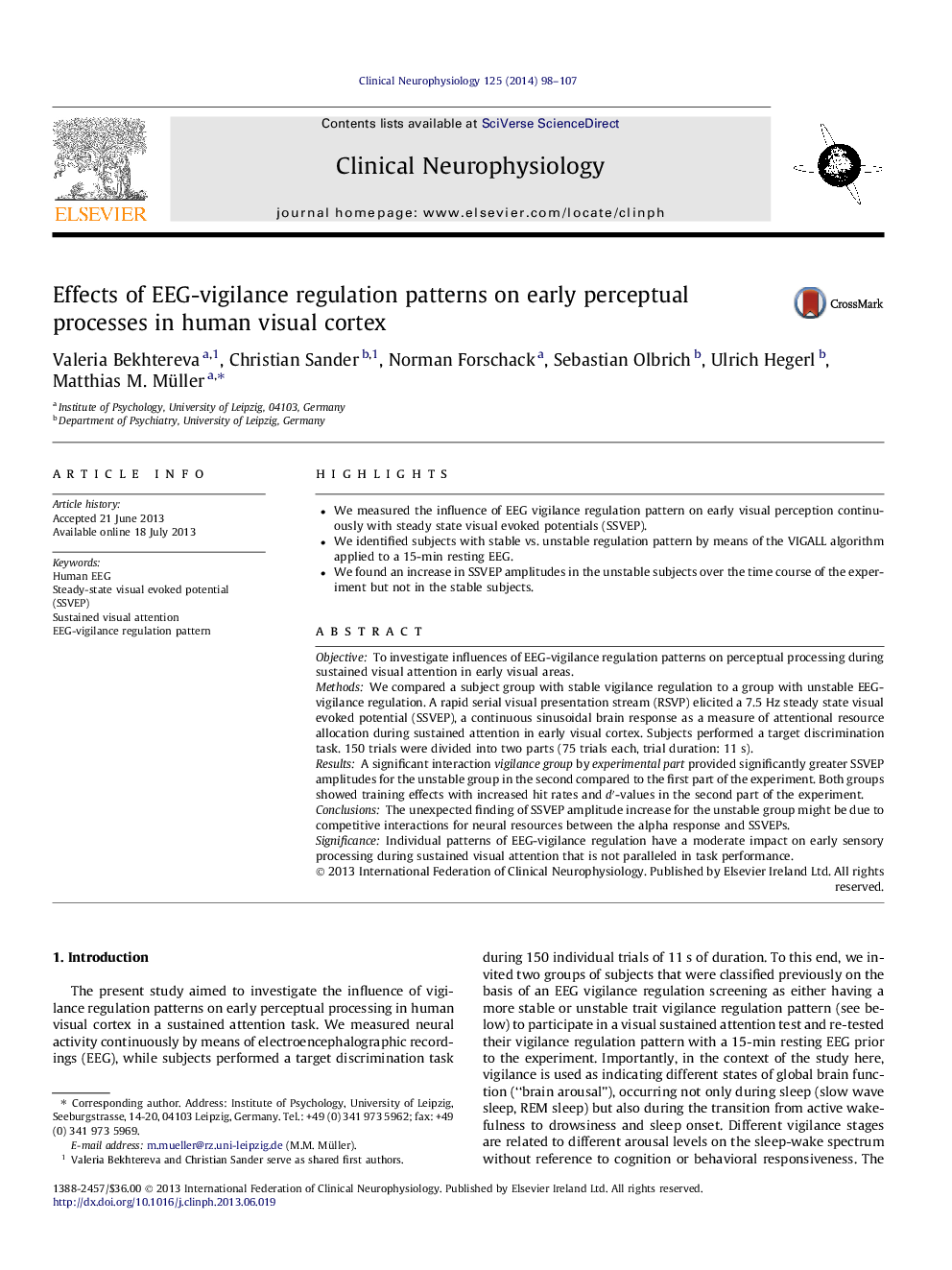| Article ID | Journal | Published Year | Pages | File Type |
|---|---|---|---|---|
| 3043638 | Clinical Neurophysiology | 2014 | 10 Pages |
•We measured the influence of EEG vigilance regulation pattern on early visual perception continuously with steady state visual evoked potentials (SSVEP).•We identified subjects with stable vs. unstable regulation pattern by means of the VIGALL algorithm applied to a 15-min resting EEG.•We found an increase in SSVEP amplitudes in the unstable subjects over the time course of the experiment but not in the stable subjects.
ObjectiveTo investigate influences of EEG-vigilance regulation patterns on perceptual processing during sustained visual attention in early visual areas.MethodsWe compared a subject group with stable vigilance regulation to a group with unstable EEG-vigilance regulation. A rapid serial visual presentation stream (RSVP) elicited a 7.5 Hz steady state visual evoked potential (SSVEP), a continuous sinusoidal brain response as a measure of attentional resource allocation during sustained attention in early visual cortex. Subjects performed a target discrimination task. 150 trials were divided into two parts (75 trials each, trial duration: 11 s).ResultsA significant interaction vigilance group by experimental part provided significantly greater SSVEP amplitudes for the unstable group in the second compared to the first part of the experiment. Both groups showed training effects with increased hit rates and d′-values in the second part of the experiment.ConclusionsThe unexpected finding of SSVEP amplitude increase for the unstable group might be due to competitive interactions for neural resources between the alpha response and SSVEPs.SignificanceIndividual patterns of EEG-vigilance regulation have a moderate impact on early sensory processing during sustained visual attention that is not paralleled in task performance.
